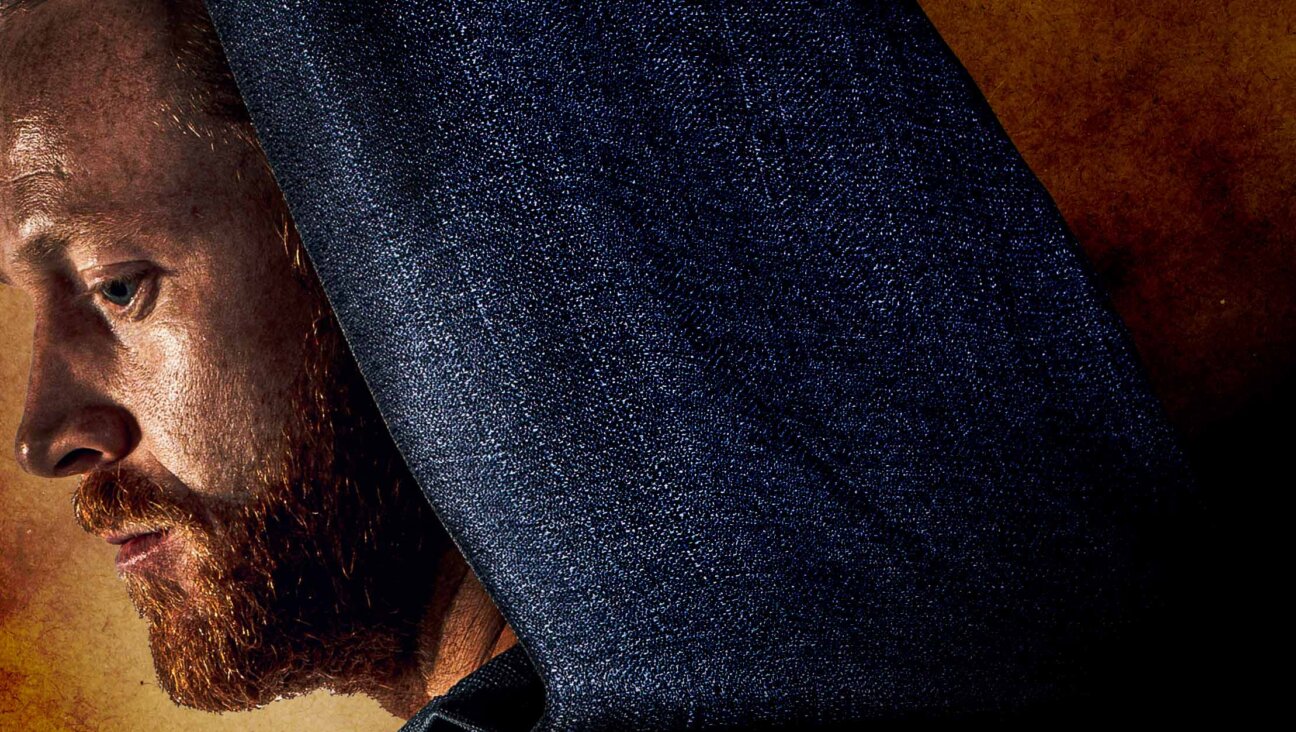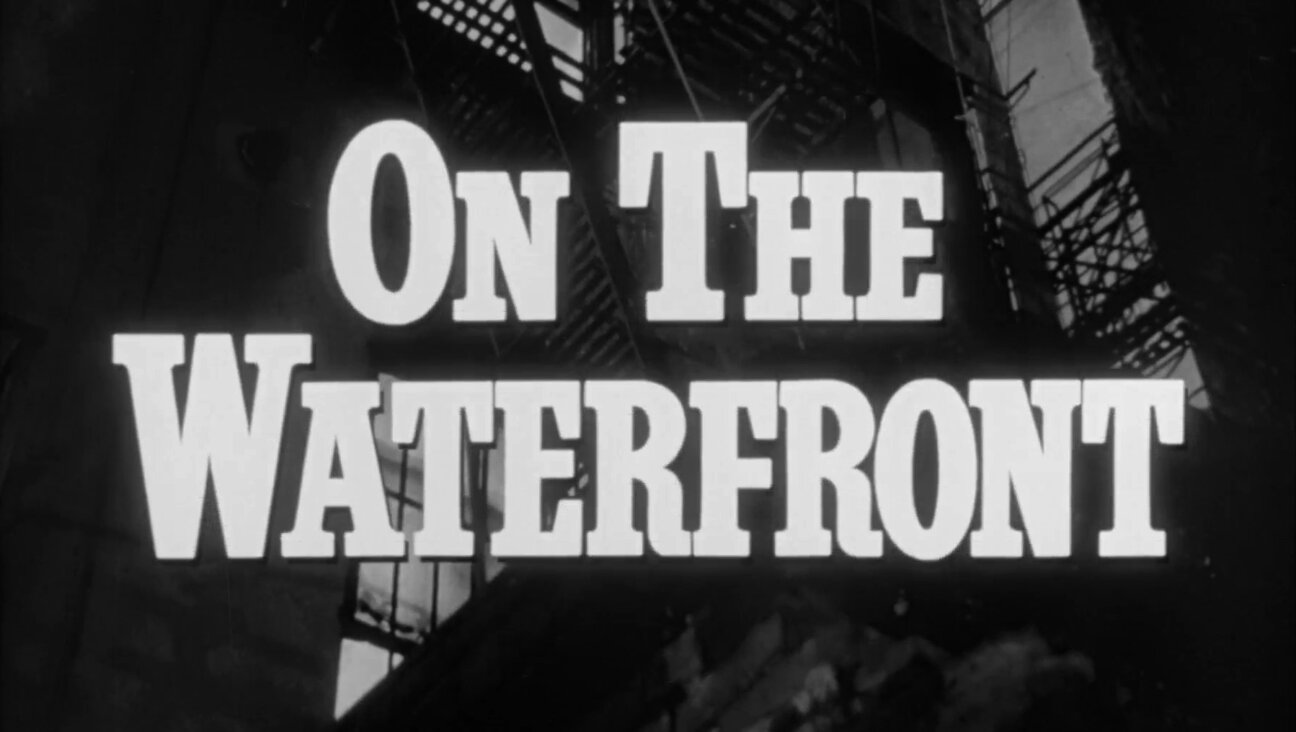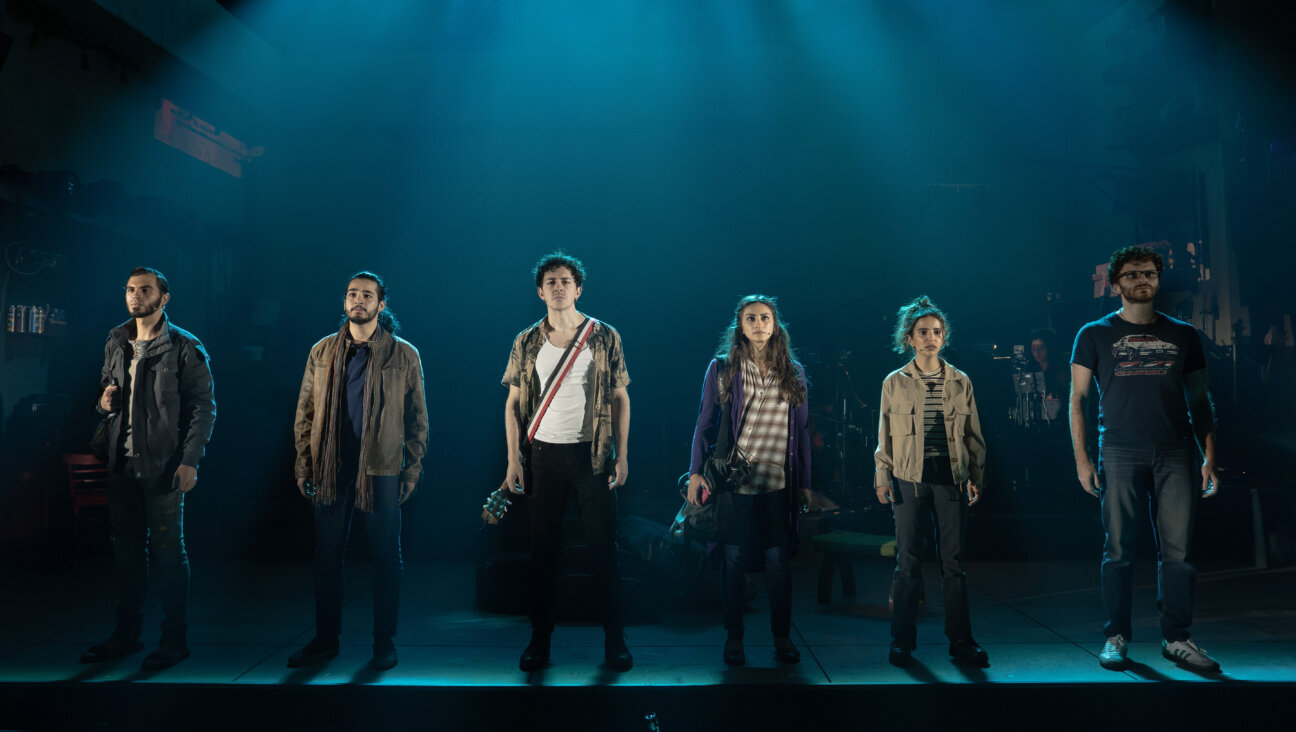Is Jewish Girl Star of Edouard Manet’s Famed Painting ‘The Railway’?

The Girl in the Picture: The woman on the left in Manet?s painting is his favorite model, Victorine Meurent, but the identity of her young companion is less certain. Image by The Art Institute of Chicago
Cast in the major exhibition “Impressionism, Fashion, and Modernity” (through September 29 at the Art Institute of Chicago), certain paintings expose their undergarments, so to speak.
The exhibit, jointly organized with Paris’s Musée d’Orsay and New York’s Metropolitan Museum of Art, where it was shown earlier this year, features a Who’s Who of impressionist painters. One of the better-known paintings, Édouard Manet’s 1873 “The Railway” (National Gallery of Art), bears a particularly compelling enigma. Posed in front of a gate, a girl turns her back to the viewer and stares into the distance, while a young woman reads a book and holds a dog on her lap. The older figure is easily identifiable as Manet’s favorite model, Victorine Meurent, but the identity of her young companion, who wears a white dress with a blue bow, is more controversial.
An entry in the exhibition catalog follows the identification by a dozen or so scholars — including Princeton University’s Philip Nord, Stony Brook University’s James Henry Rubin and Yale University’s Carol Armstrong — of the girl as the daughter of Manet’s friend, Alphonse Hirsch (1843–1884), whose studio was near Manet’s. Hirsch’s daughter gets a name, Suzanne, in the 1987 book “Manet’s Contemplation at the Gare Saint-Lazare” by Harry Rand, a senior curator at the National Museum of American History.
Hirsch was apparently a Jewish painter, although Henry Rubin calls him a “banker,” and art historian Michel Melot refers to Hirsch in his 1996 book “The Impressionist Print” as “an artist but mainly a hanger-on” to Edgar Degas. (Degas was one of several prominent artists who depicted Hirsch in his work.) Hirsch, according to a marginal Jewish Encyclopedia biography, created a portrait of France’s chief rabbi, Lazare Isidor, in 1877.
Art Institute curators referred questions about Hirsch to Juliet Wilson-Bareau, a freelance curator based in London who has published widely on Manet. In her 1998 catalog “Manet and Monet and the Gare Saint-Lazare”, Wilson-Bareau calls Hirsch “a purveyor of agreeable Salon pictures and portraits” and adds in a footnote, “Little appears to have been recorded about the life and career of Alphonse Hirsch.” She adds that nothing is known of a marriage that might support the prominent Manet historian Adolphe Tabarant’s claim that the “Railway” child is Hirsch’s daughter.
In an email to the Forward, Bareau referred to Hirsch’s paintings as “pretty second-rate” and added that “although he must have admired Manet enormously (and was evidently a good friend), he didn’t or couldn’t take the leap into committed, resolutely ‘modern’ art.” Wilson-Bareau says she she believes that Manet’s painting may have been sketched in Hirsch’s studio overlooking his garden.
In the absence of decisive scholarly help, some online sleuthing was necessary to further track the evasive Hirsch. The May 1, 1879, issue of the French Jewish review “Archives Israélites,” published by Isidore Cahen, announced the marriage of Hirsch, the painter of chief rabbi Isidor, to Henriette Perugia. The notice adds that Perugia’s sister was married to Arthur Sassoon of the wealthy Sassoon family.
Perugia appears to have been born in 1855 and to have married Alban Valabreque at some point after Hirsch’s death, although neither that nor any mention of a daughter named Suzanne can be found in the French Jewish publication. This complicates the timeline considerably. Hirsch and Perugia married six or seven years after Manet painted “Railway,” and Suzanne certainly doesn’t look like she is 7 or 8 years old in the painting.
Either Hirsch had a daughter from a previous marriage, whom the wedding announcement neglected to mention — in which case the search for Manet’s young model is back to square one — or the girl in Manet’s painting is not Suzanne Hirsch. Either way, there’s a good deal more to the painting than meets the eye.
Menachem Wecker is a Chicago-based writer on art and religion.
A message from our CEO & publisher Rachel Fishman Feddersen

I hope you appreciated this article. Before you go, I’d like to ask you to please support the Forward’s award-winning, nonprofit journalism during this critical time.
At a time when other newsrooms are closing or cutting back, the Forward has removed its paywall and invested additional resources to report on the ground from Israel and around the U.S. on the impact of the war, rising antisemitism and polarized discourse.
Readers like you make it all possible. Support our work by becoming a Forward Member and connect with our journalism and your community.
— Rachel Fishman Feddersen, Publisher and CEO























